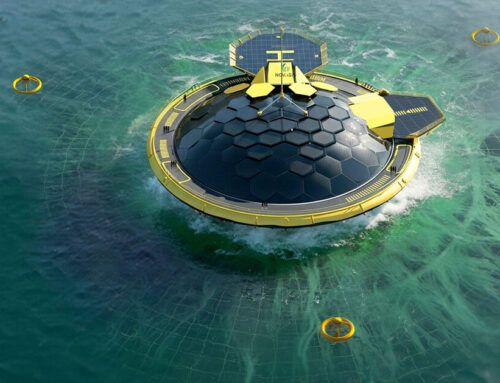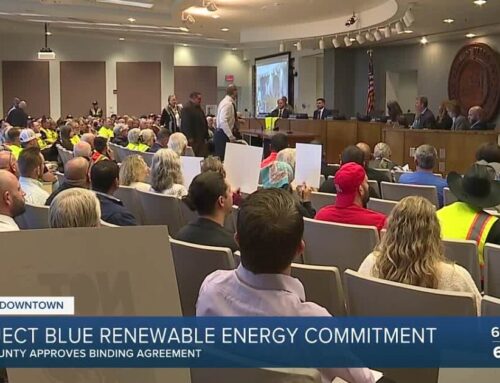Tracey Weiss, Our Ocean Backyard | California takes action to improve school environments
May 10, 2025
The beauty of nature in spring delivers inspiration — a good time to reflect on how we can better care for our planet. For some fortunate students across the state, the seeds of caring for the Earth are being planted somewhere that might surprise you: in the schoolyard.
For many of our youngest learners, their initial connection with nature and science starts very early in childhood — by splashing in a puddle after a rainstorm, exploring leaves changing colors on a tree or the opportunity to dig in a garden bed and witness the sprouting of tiny green shoots. The deepest roots of environmental literacy don’t begin with a textbook. Nature provides lessons everywhere and children are eager learners.
To reach our state’s goal of raising the next generation of environmentally literate students, we must examine the spaces where children learn and play, and there is a problem with California school campuses. Many school grounds are covered by heat-absorbing asphalt, devoid of greenery. New research reveals that tree canopy coverage — which provides shade, improves air quality and supports mental health — is low in the places where children spend most of their time. Statistically, just 6.4% of “student zones” — the playgrounds, fields and outdoor areas used daily — offer a tree canopy’s respite. The good news is that changes are underway across California.
Nearly 2.6 million California students attend schools with a green space percentage below 5%. According to Green Schoolyards America, only 45% of trees on school campuses are in student-use areas. This lack of green space creates more than discomfort. Asphalt-covered campuses often become dangerously hot during warmer months, impacting student health, learning and the capacity to focus.
Over 1.5 million students in these schools qualify for free or reduced-price meals. This “meal metric” helps clarify a school’s economic position and, in this instance, highlights the complexity and inequity of how the health and well-being of children from lower-income communities are on the frontlines of environmental impact. Students who would benefit most from healthy outdoor spaces are often the least likely to have access.
Organizations like Green Schoolyards America are working to transform paved-over campuses into vibrant, park-like settings that benefit students and the community. These redesigned schoolyards will be cooler and double as outdoor classrooms and ecological habitats, boosting academic opportunity while increasing local biodiversity.
In Santa Cruz County, the Green Schools Program leads through environmental education and campus sustainability by supporting students, teachers and staff to think critically about resource use and conservation through hands-on learning and community engagement. From reducing waste and managing stormwater runoff to conserving water and energy, the goal is to make schools more sustainable and equip students with skills that serve beyond the classroom — and it is working.
Students of all ages are taking action. In elementary schools, the Coastal Watershed Council provides classroom presentations to help children understand the importance of cultivating waste-free campuses through action and engagement. Students learn how simple decisions — such as using reusable containers for their lunches, keeping litter out of waterways or turning off lights — can impact the environment and how they can make choices that have a positive impact.
Another beneficial shift is seeing older students get involved. The county Office of Education in Santa Cruz supports student engagement and leadership. It was exciting to see hundreds of high school students gather this spring at the fourth annual Youth for Environmental Action Summit, an inspiring event led by local young people. Attendees shared projects to help make schools more sustainable and advocated for green policies to help shape the future of environmental action in their communities.
This year, the Santa Cruz County Office of Education was one of only three California county offices of education to receive Gold level recognition from the U.S. Department of Education’s Green Ribbon Schools, honoring environmental literacy and sustainability leadership. Much credit for this progress stems from the vision and dedication of environmental literacy coordinator Amity Sandage, who has helped regional schools deepen their capacity and commitment to environmental education.
Other opportunities for connecting education with conservation include the National Oceanic and Atmospheric Administration’s Ocean Guardian Schools program. Students living near the ocean can commit to protecting local watersheds by proposing and implementing conservation projects for their school campus. Whether educating others about the perils of single-use plastic, restoring habitats or engaging in citizen science, these student-led science and environmental projects are making a difference while fostering young people’s sense of stewardship, empowerment and hope for the future.
There are many ways to participate in the global and local environmental movement. Each tree planted, piece of litter picked up and lessons taught in the garden, forest, meadow or near the ocean move us toward a future where young people become empowered and engaged in developing solutions. The incremental steps we take impact our entire community’s well-being. Actions determining the future health of our air, land and water are happening today. Thanks to local students and educators’ energy, creativity and commitment, the future looks greener for our ocean backyard.
Tracey Weiss is the executive director of the O’Neill Sea Odyssey. She is working to support the residents of Santa Cruz County with the information that allows them to connect, impact and understand the ocean ecosystem and the regional environment we call home. She can be reached at osoexecdirector@oneillseaodyssey.org.
Search
RECENT PRESS RELEASES
Related Post




